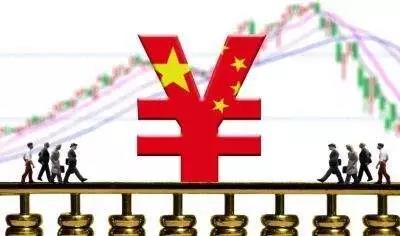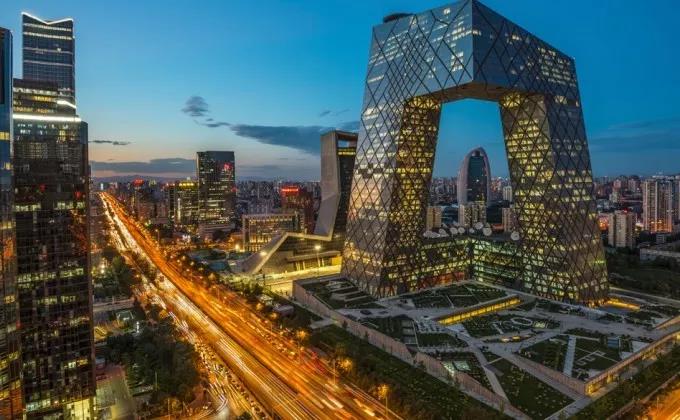
By Edward Tse | January 12th, 2018
It has become a tradition for people to come up with predictions around the new years and here’s my list for 2018. This is my first endeavor and given my professional focus, my predictions will center on strategy and businesses with focus on China and China’s increasingly involved role in the world.
No predictions of this sort will be totally MECE (mutually exclusive and collectively exhaustive), including mine. I will attempt to go through my thoughts from the top of my mind. My predictions for 2018 will be as follows.
1. China’s GDP growth for 2018 will be around 6.5 percent
I don’t really have a crystal ball and as you know, this sort of predictions is anyone’s guess. Nonetheless, my work through different parts of China has allowed me to talk to businesses and people from all over, As always, there is both optimism and pessimism. Overall, I sensed more optimism than pessimism and I felt that a somewhat positive momentum is being built. Like always, there will be areas in which China will struggle, for example, sectors with chronic overcapacity and structurally low performing SOEs in parts of China. There are also doubts on the prospects of China’s property sector in 2018 and China’s debt level remains high, causing concerns about its financial risks; however, there will be areas in which China will continue to do well. According to a study by the Institute of Population and Labor Economics at the Chinese Academy of Social Sciences, China’s new economy – Internet-based businesses ranging from e-commerce to car-hailing services – grew twice as quickly as China’s overall GDP in the past 10 years to 2016. The contribution from the new economy to the overall GDP growth will continue in 2018, along with an increase in consumption and investment as well as trade, all serving to continue to prop up the GDP growth. In summary, barring major Black Swan events, I expect China’s GDP growth would hover around 6.5 percent plus and minus some, consistent with what the Chinese government and institutions such as the World Bank and IMF predicted. The perennial prediction of the “coming collapse of China” will unlikely to happen (again).
2. China’s consumers will continue to trade up
The fact that the Chinese middle class is growing and that their ability to afford more products and services continues to increase shouldn’t be viewed as a prediction anymore. This will happen almost for sure, but it’s still an important trend that’s worth mentioning. Depending on whose estimates you believe, the number of China’s middle class is currently around two-and-a-half to three hundred millions. All estimates are pointing to an overall increase over time. And these consumers are trading up. Instead of basic products and services, Chinese consumers are increasingly looking for those who can cater for better lifestyle and health. They are also increasingly digitally savvy and globally mobile, and are becoming more individualistic in their needs and consumption behavior.
3. Innovation and entrepreneurship in China will continue to thrive
China has begun to shed off its image as a copycat nation as more and more companies, both large and small, are becoming innovators in their own right, mostly in tech-enabled business models. Entrepreneurship is spreading across China – not only in top-tiered cosmopolitan areas but also in lower-tiered cities and across a wide range of sectors. Additionally, the entrepreneurs are getting younger. Many of them are in their 30’s or even 20’s. The Chinese central government has embraced innovation and entrepreneurship as a core part of the national development strategy. In 2018, we would expect more to come.

Source: Google
4. Technology will play an even larger role in driving China’s innovations
The wireless Internet and the smartphone have played a major enabler role for helping to drive China’s rapid growth in innovations for the past decade. As Chinese entrepreneurs continue to search for the next rounds of innovations, technology will continue to play a major enabler’s role. The Chinese have embraced various forms of new technologies in artificial intelligence (AI), internet of things (IoT), augmented reality (AR) and virtual reality (VR), and are experimenting many different ways for innovations. Surely, many of these experiments would fail but some of them would succeed. Given the size of the Chinese market, the ability of scaling up gives experimenters opportunities to try, learn and adapt, allowing a natural selection of the right application of technology to businesses.
5. Continued hyper growth of the Chinese ecosystems organizations
In 2017, China made history as Alibaba and Tencent became two of the world’s largest market cap companies and their rankings continued to move up. These two companies are prime examples of “mega-ecosystems” as they have built out from their original core business to form various ecosystems that together form a mega ecosystem. They jump from sector to sector as they see new market opportunities pop up as China continues its reform and opening up, and as technologies become available as an enabler for disruptive means of doing business. Each mega ecosystem attempts to offer what the consumer needs for his or her “lifestyle needs”, so each of them could be a bona-fide exponential business. When put together, the mega ecosystem becomes “super exponential” in their growth. While leading US tech companies such as Amazon and Alphabet are also major ecosystems players and are very successful, the Chinese seem to be more inclined to migrate across sector boundaries and to create larger ecosystems. Companies like Geely, Didi Chuxing, Ping’an, Meituan are building out their respective ecosystems in incredible speed and intensity. Clearly, access to abundant users’ data is the core for this kind of companies. Even shared bikes start-ups like Mobike and ofo claim that they are data companies and not just shared bikes companies, meaning that they would also build out their ecosystems with consumer lifestyle at their core.

Source: Google
6. Mixed ownership reform of Chinese SOEs will finally happen
China’s SOE reform has been talked about for at least for the last couple of decades. In recent years, the notion of mixed ownership reform was mentioned many times as the solution to the structural issues of the Chinese SOEs. However, not much has taken place. In 2017, China Unicom’s mixed ownership reform was given the green light by the Chinese government. It looks like the Chinese government is ready to step on the gas pedal for this sort of reform in 2018. Not only SOEs at the central government level, but also many of those at local levels will be targets for reform. And, reform will likely be focused on enterprises in the “competitive sectors.” Let’s see how it would go but from what I saw and heard, it looks like things can get much more serious this time.
7. More opening up will be allowed for foreign companies’ ownership of their operations in China
Since its reform around three decades ago, China has been gradually opening up its industry sectors for foreign participation. Today, while some of the sectors remain pretty closed, some of them are entirely open. And, some are somewhere in between. I would expect the gradual opening process would continue but it is unlikely every sector would become entirely open overnight. In November 2017, the Chinese government announced the ease in foreign equity participation in a range of financial services sectors. While this move didn’t allow full foreign ownership in the relevant sectors, the increase in scope and scale was quite significant. I would expect more opening up in 2018.
8. Foreign companies’ performance in China will continue to be mixed
Some pundits have claimed that the golden era for (foreign-headquartered) MNCs in China is over. I don’t agree with that. China’s continued growth offers plenty of opportunities for foreign MNCs. It’s a matter of how the MNCs view the opportunities. However, the performance of these companies in China to-date has been mixed. Some came to China and were disappointed with the market. Some of them even decided to withdraw from the China market. Some other MNCs are engaged in sectors where there is significant and structural overcapacity. These companies tend to be in a wait-and-see mode. Yet, some others have found China to have become one of their most important and most profitable markets, or even the most important and most profitable. This overall pattern will probably continue in 2018 but the dynamics would evolve. For the companies who are in the third category, I predict most, if not all, of them would continue to invest in China, and for some, significantly. For some who have left or have de-emphasized the China market, they may return to and re-invest in China. For these companies, China is just too big and too important a market opportunity, as well as a pivot for these companies’ global strategy, to ignore. Competition in China’s open sectors will become even more intensive in 2018 driving foreign MNCs to become more competitive and more innovative in their own right.
9. Cross-border M&As will continue
While Chinese companies’ outbound investment in 2017 has dropped from its peak in 2016 due mostly from the Chinese government’s capital control measures, the 2017 investment level was modestly higher than that in 2015. Chinese companies’ interest in investing overseas has not fully cooled down as many of the Chinese companies are still seeking for ways to do these investments. From the Chinese government’s standpoint, the reason for investing overseas has to be legitimate. But as long as they are regarded as legitimate, it looks like the Chinese government would give the green light. Two recent cases in point were Geely’s US$ 3.3 Billion purchase of 8.2% of AB Volvo, the truck manufacturer, in December and the US$ 9 Billion deal completed by private oil company CEFC China Energy to take a 14% stake in Russia’s biggest crude producer, announced in September. I expect this trend will continue in 2018. Perhaps the total volume or value of the transactions wouldn’t shoot up in a major way, but I would expect a modest increase. Of course, cross-border Chinese investments are sometimes blocked by the host government due to “national security” reasons. I expect this would continue to be a challenge for the Chinese investors as they look to investing overseas.

Source: Google
10. The China development model continues to foster
For a couple of decades, the so-called “China Development Model” with which a top-down guiding hand by the central government and the bottom–up grass-roots entrepreneurship has worked remarkably well for China. This model has created several decades of high economic growth and has lifted several hundreds of millions of people out of poverty. While some pundits continue to argue against the legitimacy and sustainability of this approach, surveys have shown the Chinese people are largely supportive of the results that this model has generated. In addition to the top-down government guiding hand and the bottom-up entrepreneurship, the “China Model” also includes a middle piece which gives the entire model extra effectiveness and resilience. That is the intensive coopetition among various provincial and municipal governments. Over the years, local governments have tried to build their respective advantageous positions over others. To this end, various governments would choose certain sectors or technologies as focus of their developments. This competition has generated much progress across China and in some cases, much waste. While this kind of competition will continue in 2018, regional clusters of cities are also being formed such as the Greater Bay Area linking key parts of Guangdong Province with Hong Kong and Macau, the Greater Shanghai Area, the Greater Beijing Area (Jing-Jin-Ji) as well as the development of the Xiong’An New Area in Hebei Province. While cities within each cluster would cooperate with each other, competition is somewhat significant across the clusters. This coopetition will manifest itself more profoundly in 2018 providing an underpinning for further progress for China.
So, here they are – my predictions for strategy and businesses in China in 2018. As I said, these are not MECE. For example, I haven’t covered major topics such as Belt & Road, capital market, financial reform. property market, shared economy, etc. Nonetheless, hopefully these predictions offer some insights as you plan for your business in 2018.

